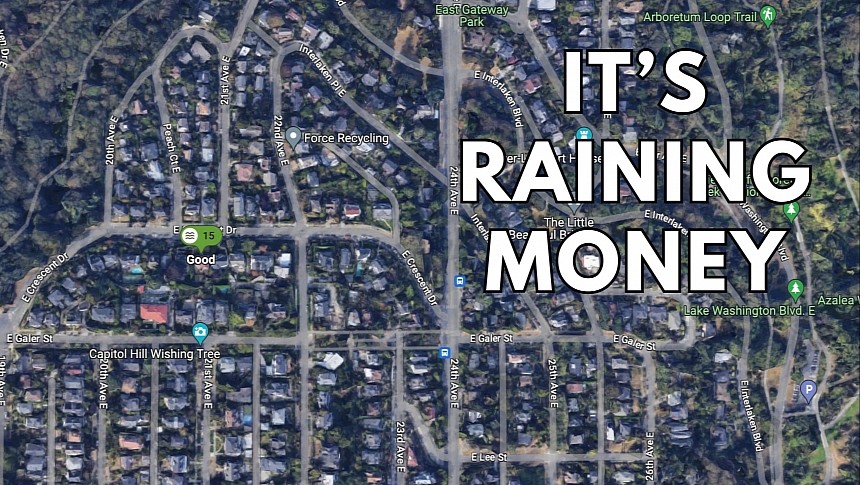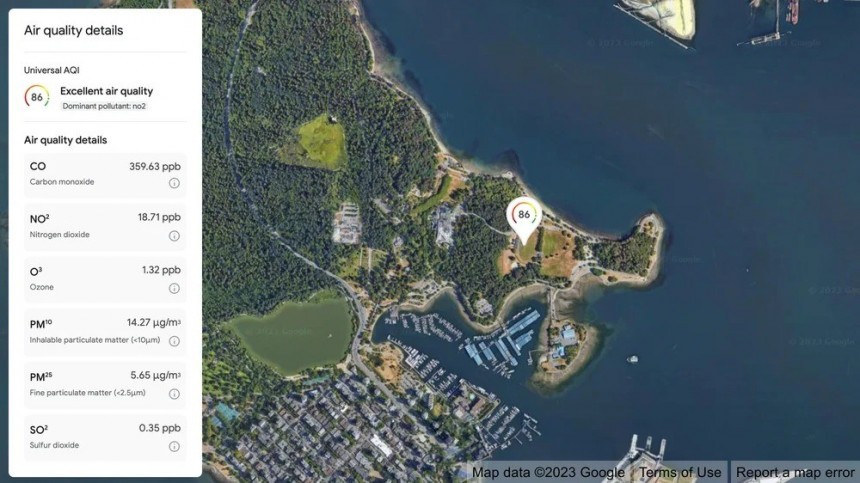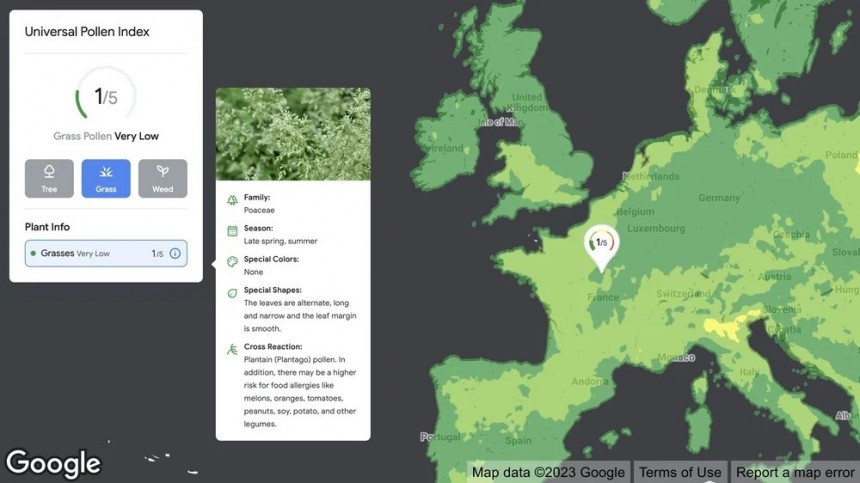Google Maps is no longer just a navigation app supposed to guide you from where you are to where you want to be. The service has evolved into a fully featured platform that offers incredible capabilities, including support for immersive view.
Currently available in a limited number of regions, immersive view is one of Google's latest innovations, fusing satellite photos, street-level imagery, historical traffic patterns, and weather data to create a realistic 3D simulation of a selected place.
However, while users are interested in functionality that helps them navigate and explore, Google is also working on the other side of Google Maps. And this "other side" has a very simple goal: bring home the bacon.
The Mountain View-based search giant has announced three new APIs allowing paying customers to access sets of mapping data for solar and air quality information.
Google's initiative is more complex than it sounds, but the new program comes down to a simple concept. Searches for solar energy are up 60 percent, and given the fast transition to renewable solar energy, the company believes it can support the trend with its mapping data. And eventually, make millions of dollars (Google estimates it'll generate approximately $100 million in the first year alone) along the way.
Google wants to expand the mapping APIs beyond navigation, so the first new announcement concerns the Solar API.
Few people remember it, but in 2015, Google launched Project Sunroof, a brilliant idea to help people calculate how much money they'd save by installing solar panels on their roofs. The system used Google's data sets to look for solar information based on a provided address, taking into account key details like the building's roof (with satellite imagery), trees, and shade.
Now, Google is pushing this concept to a new level with the Solar API. The company explains that Project Sunroof rapidly caught the attention of solar installers and other firms in the energy sector, as they wanted access to advanced tools like roof geometry, historical weather patterns, how much sunlight a building receives, energy costs, and so on. All these details are now bundled with the Solar API and available for companies ready to pay for access to the data. Google has an impressive set of data, as it covers over 350 million buildings in the largest countries worldwide.
The Air Quality API is an evolved version of the air quality layer already available in Google Maps. As a consumer, you can launch Google Maps to see the AQI score for a specific place – you can see the air quality index for your current location but also for a different region you explore in Google Maps.
Google says the Air Quality API provides businesses with additional information, including air quality data, pollution heatmaps, and pollutant details. You can see carbon monoxide, nitrogen dioxide, ozone, inhalable particulate matter, and sulfur dioxide levels for more than 100 countries worldwide.
Google says the API uses multiple data sources, including sensors, satellites, and government monitoring stations. However, it also conducts a thorough analysis using machine learning, as the company wants to accurately predict the air quality index and the level of pollutants in an area at any given time.
The third new API is the Pollen API. It has a self-explanatory name, so it displays pollen information for the most common allergens. Google supports approximately 65 countries at this point, but the number will increase in the coming years.
Google says its API runs on machine learning to determine the location of specific plants producing pollens and then conduct an advanced analysis to predict how the pollen would spread.
The search company believes its new API trio will target some of the largest names in the industry. An internal potential customer list that made its way to the web includes big names like Tesla and SunRun, Zillow, Redfin, and PG&E. Solar installers like Tesla Energy would be primarily interested in the Solar API, while real estate companies like Zillow could use the Air Quality API to perform analysis for their customers. Additionally, healthcare, auto, and transportation companies could use the Air Quality API and the Pollen API to help customers make informed decisions for their destinations, be they vacations or daily commutes.
Google is already planning in the long-term with the new APIs, so its strategy involves connecting the technology to Google Count products. Eventually, customers would get access to a full suite of services, so Google could monetize its sets of mapping data more efficiently.
Google says it could also work together with cities for efficient analysis for their programs, as the Air Quality API could help authorities determine regions with poor air quality and make informed decisions to reduce certain pollutants, such as those generated by traffic congestion in the largest city intersections.
However, while users are interested in functionality that helps them navigate and explore, Google is also working on the other side of Google Maps. And this "other side" has a very simple goal: bring home the bacon.
The Mountain View-based search giant has announced three new APIs allowing paying customers to access sets of mapping data for solar and air quality information.
The new APIs
Google wants to expand the mapping APIs beyond navigation, so the first new announcement concerns the Solar API.
Few people remember it, but in 2015, Google launched Project Sunroof, a brilliant idea to help people calculate how much money they'd save by installing solar panels on their roofs. The system used Google's data sets to look for solar information based on a provided address, taking into account key details like the building's roof (with satellite imagery), trees, and shade.
Now, Google is pushing this concept to a new level with the Solar API. The company explains that Project Sunroof rapidly caught the attention of solar installers and other firms in the energy sector, as they wanted access to advanced tools like roof geometry, historical weather patterns, how much sunlight a building receives, energy costs, and so on. All these details are now bundled with the Solar API and available for companies ready to pay for access to the data. Google has an impressive set of data, as it covers over 350 million buildings in the largest countries worldwide.
The Air Quality API is an evolved version of the air quality layer already available in Google Maps. As a consumer, you can launch Google Maps to see the AQI score for a specific place – you can see the air quality index for your current location but also for a different region you explore in Google Maps.
Google says the API uses multiple data sources, including sensors, satellites, and government monitoring stations. However, it also conducts a thorough analysis using machine learning, as the company wants to accurately predict the air quality index and the level of pollutants in an area at any given time.
The third new API is the Pollen API. It has a self-explanatory name, so it displays pollen information for the most common allergens. Google supports approximately 65 countries at this point, but the number will increase in the coming years.
Google says its API runs on machine learning to determine the location of specific plants producing pollens and then conduct an advanced analysis to predict how the pollen would spread.
The search company believes its new API trio will target some of the largest names in the industry. An internal potential customer list that made its way to the web includes big names like Tesla and SunRun, Zillow, Redfin, and PG&E. Solar installers like Tesla Energy would be primarily interested in the Solar API, while real estate companies like Zillow could use the Air Quality API to perform analysis for their customers. Additionally, healthcare, auto, and transportation companies could use the Air Quality API and the Pollen API to help customers make informed decisions for their destinations, be they vacations or daily commutes.
Google is already planning in the long-term with the new APIs, so its strategy involves connecting the technology to Google Count products. Eventually, customers would get access to a full suite of services, so Google could monetize its sets of mapping data more efficiently.
Google says it could also work together with cities for efficient analysis for their programs, as the Air Quality API could help authorities determine regions with poor air quality and make informed decisions to reduce certain pollutants, such as those generated by traffic congestion in the largest city intersections.















